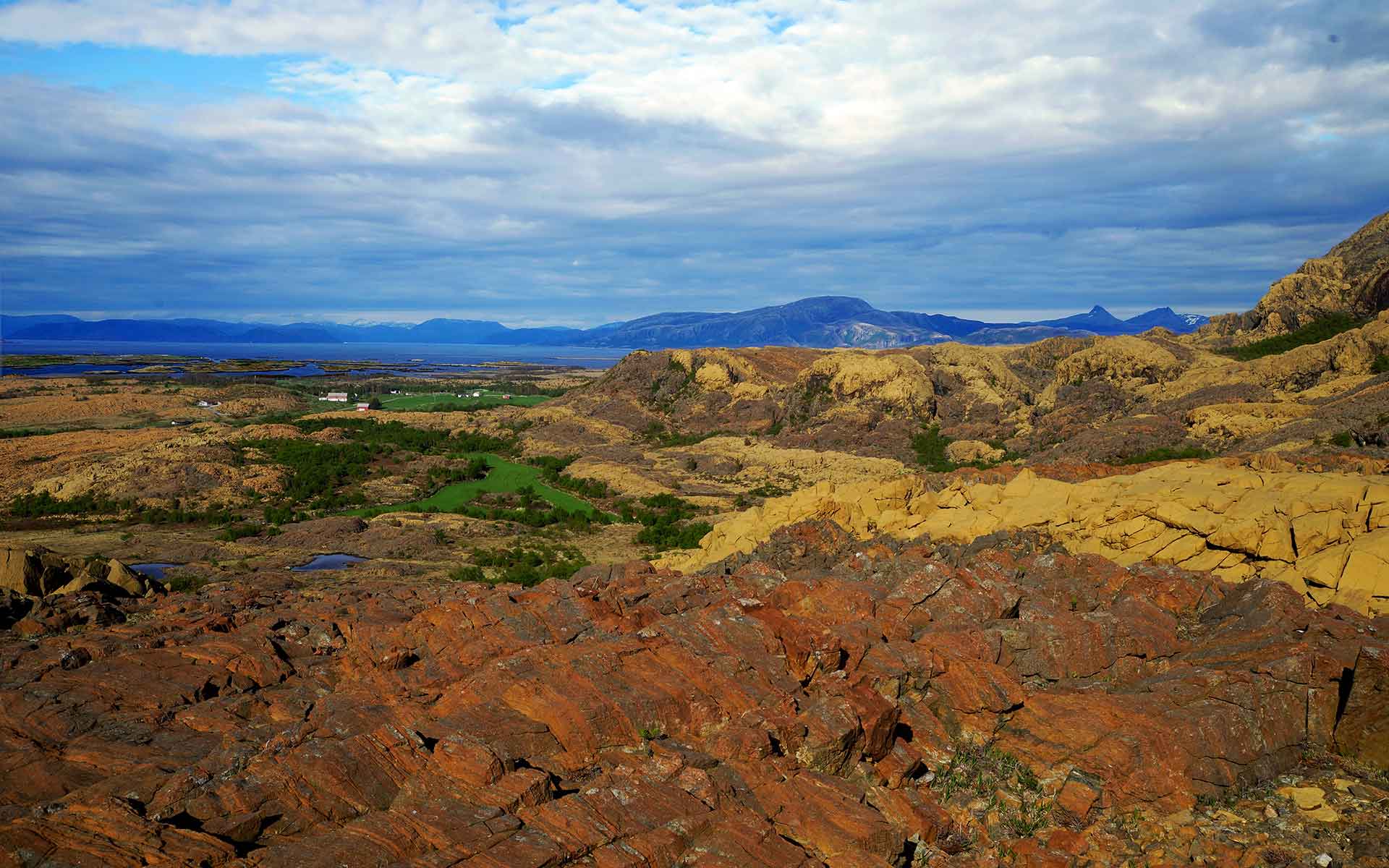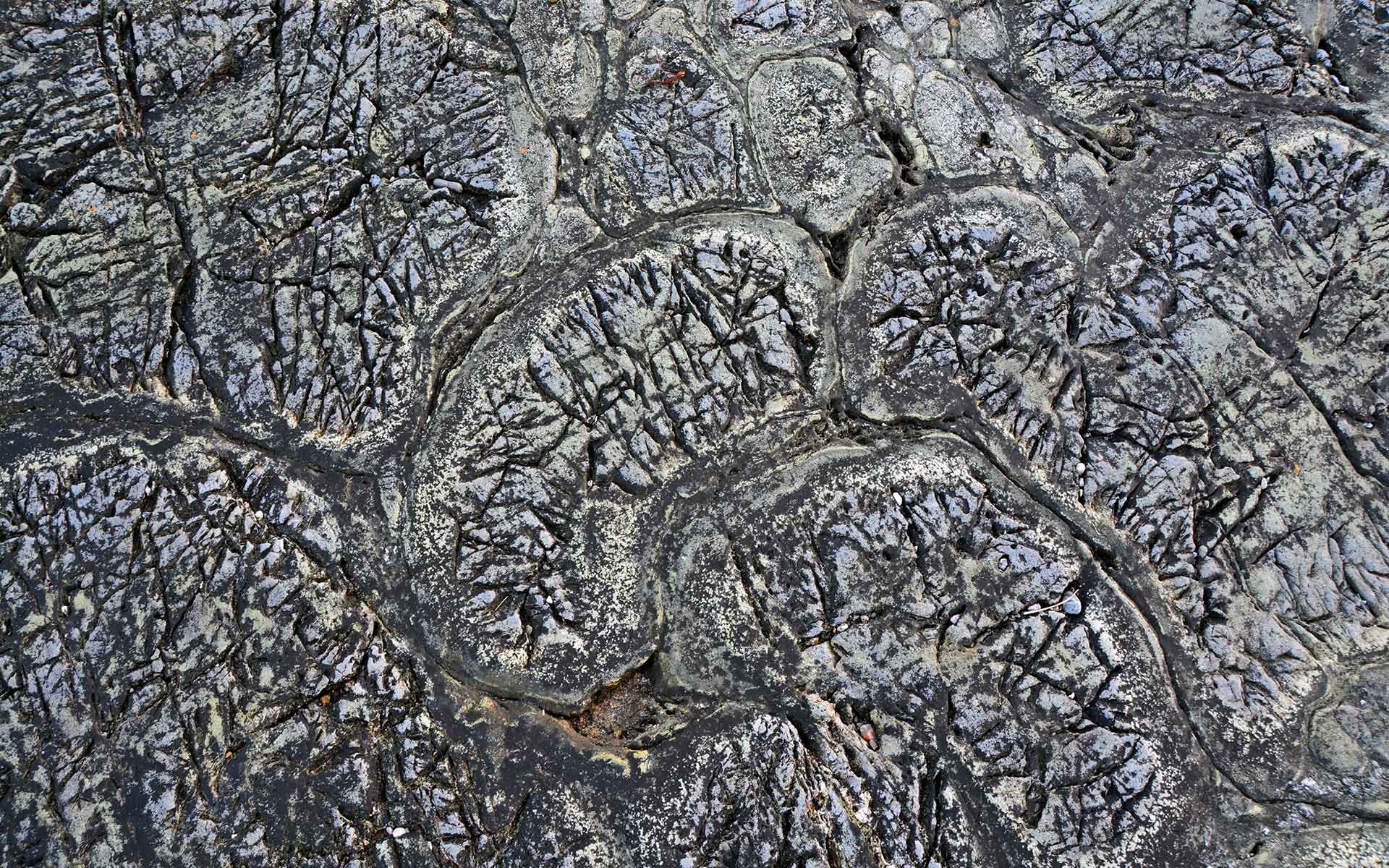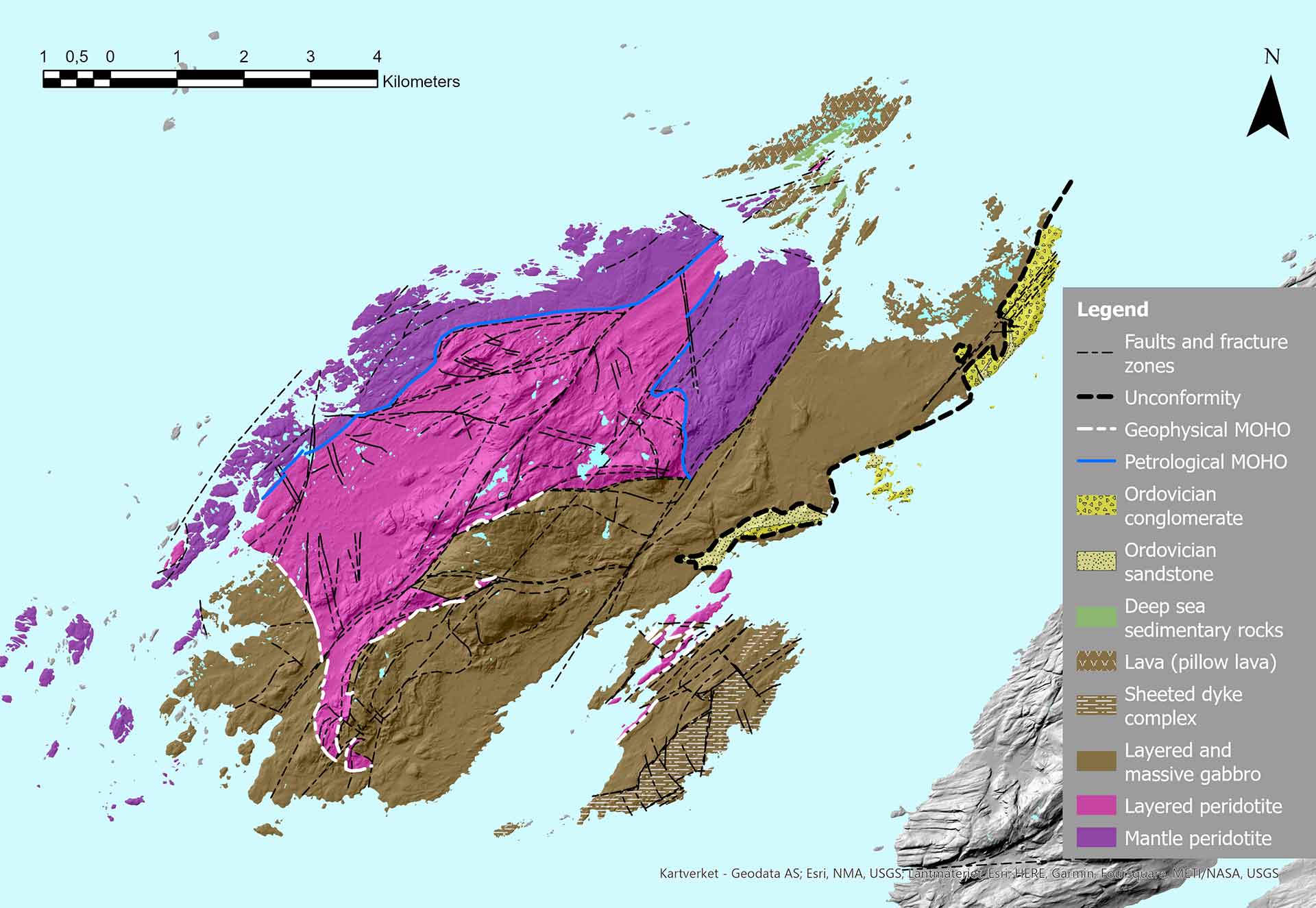
Layered peridotites from the lower section of Leka ophiolite complex. The colours reflect varying proportions of olivine, clinopyroxene and orthopyroxene. Photo: Arnfinn Holand.
Geological Period
Cambrian (Miaolingian) to Lower Ordovician
Main geological interest
Igneous and Metamorphic petrology
Tectonics
Location
Leka municipality/ Trøndelag County, Norway
65°05’49”N, 011°38’57”E
Layered peridotites from the lower section of Leka ophiolite complex. The colours reflect varying proportions of olivine, clinopyroxene and orthopyroxene. Photo: Arnfinn Holand.
One of the best exposed and accesible Caledonian ophiolite complex showing the remnants of the Iapetus Ocean.
The Leka Ophiolite is outstanding among the world’s ophiolite complexes. The exposures of upper mantle and lower crustal lithologies are spectacular and among the best observed anywhere. Here, mantle peridotites and the transition to ultramafic cumulates are 100% exposed along glacially eroded and polished surfaces. This facilitates studies of the magmatic processes below, along and above the petrological MoHo. The Leka ophiolite also displays all aspects of a classical ophiolite section, including layered and massive gabbro, sheeted dyke complex, pillow lavas and deep sea sediments. In addition to being well studied, the continuous, unweathered sections make it possible for the visitors to grasp the complexity of the oceanic crust.
- Geological description
ln Northwest Europe, a number of Caledonian ophiolite complexes have been distinguished as remnants of the ancient Iapetus Ocean, formed in a supra-subduction setting (SSZ ophiolites), more closely related to island arcs than ocean ridges. Dating of these complexes has revealed that most of them formed within a 10-million-year period in the Late Cambrian and Early Ordovician (Dunning and Pedersen, 1988). Of all the Caledonian ophiolite complexes, the Leka ophiolite is outstanding. From the exceptionally exposed mantle peridotites one can cross the mantle-crust boundary on foot. When passing across this boundary, the rocks change their character from typical mantel peridotite to layered sequences displaying tens to hundred-meter-thick units of olivine-rich rocks (dunite) interlayered with pyroxene rich units. This layered peridotite sequence demonstrates that the influx of magma from the mantle to the lower crust is episodic – in a similar way as volcanic eruptions occur as discrete events. The layered series also provide insights into the nature of crustal magma reservoirs and the crystallization of magma within the lower crust (Furnes et al., 1992; Carter et al., 2021). Further up-section, the volcanic part of the ophiolite complex is remarkably well exposed. At islands just north of Leka, examples of different types of submarine volcanic deposits can be seen, as well as layers of deep-sea sediments, reflecting pauses between eruptive events.
- Scientific research and tradition
Together with the Karmøy Ophiolite, Leka was the first ophiolits described in the Scandinavian Caledonides (Prestvik and Roaldset, 1978; Furnes et al., 1988). Since then, research teams have over the years added new knowledge about formation age, plate tectonic setting and obduction history (i.e. Dunkel et al., 2017). Twenty-three scientific papers have been published on the ophiolite.
- Reference
Carter, E.J. et al. (2021) ‘Multi-stage fluid infiltration and metasomatism in supra-subduction zone mantle: evidence from halogens and noble gases in the Leka Ophiolite Complex, Norway’, Geochimica et Cosmochimica Acta, 307, pp. 258–280. Available at: https://doi.org/10.1016/j.gca.2021.04.028.
Dunkel, K.G. et al. (2017) ‘Localized slip controlled by dehydration embrittlement of partly serpentinized dunites, Leka Ophiolite Complex, Norway’, Earth and Planetary Science Letters, 463, pp. 277–285. Available at: https://doi.org/10.1016/j.epsl.2017.01.047.
Dunning, G.R. and Pedersen, R.B. (1988) ‘U/Pb ages of ophiolites and arc-related plutons of the Norwegian Caledonides: implications for the development of Iapetus’, Contributions to Mineralogy and Petrology, 98(1), pp. 13–23. Available at: https://doi.org/10.1007/BF00371904.
Furnes, H. et al. (1991) ‘Magma development of the Leka Ophiolite Complex, central Norwegian Caledonides’, Lithos, 27(4), pp. 259–277. Available at: https://doi.org/10.1016/0024-4937(91)90003-4.
Furnes, H., Pedersen, R.B. and Stillman, C.J. (1988) ‘The Leka Opholite Complex, central Norwegian Caledonides: field characteristics and geotectonic significance’, Journal of the Geological Society, 145(3), pp. 401–412. Available at: https://doi.org/10.1144/gsjgs.145.3.0401.
Pedersen, R.-B., Johannesen, G.M. and Boyd, R. (1993) ‘Stratiform platinum-group element mineralizations in the ultramafic cumulates of the Leka ophiolite complex, central Norway’, Economic Geology, 88(4), pp. 782–803. Available at: https://doi.org/10.2113/gsecongeo.88.4.782.
Prestvik, T. and Roaldset, E. (1978) ‘Rare earth element abundances in Caledonian metavolcanics from the island of Leka, Norway’, Geochemical Journal, 12(2), pp. 89–100. Available at: https://doi.org/10.2343/geochemj.12.89.
- Author(s)
Bergliot Kulsrud Storruste.
Trollfjell UNESCO Global Geopark. Norway.
Rolf Birger Pedersen.
University of Bergen. Norway.
Tom Heldal.
Scientist, Geological Survey of Norway.


